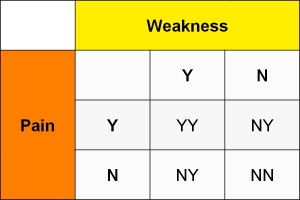Call 603.742.2007 | Toll-Free 800.429.5002 | Request an appointment | Pay My Bill
- Home
- Physicians
- Charles Blitzer, MD
- Christopher Couture, MD
- Mark Cullen, MD
- Peter Dirksmeier, MD
- Adam Fleit, MD
- Mark Geppert, MD
- Jennifer Hopp, MD
- Joseph Konopka, MD
- David Thut, MD
- Gavin Webb, MD
- Physician Assistants
- Buy Xanax Online
- Buy Valium Online
- Buy Tramadol Online
- Buy Soma Online
- Buy Priligy Online
- Buy Phentermine Online
- Buy Nolvadex Online
- Buy Ambien Online
- Buy Augmentin Online
- Buy Zovirax Online
- Buy Prednisone Online
- Buy Clomid Online
- Buy Accutane Online
- Buy Levitra Online
- Buy Generic Viagra
- Buy Generic Cialis
- Buy Ativan Online
- Specialties
- Services
- Education
- Blog
- News
- Patient Gateway
Are All Rotator Cuff Tears Created Equally?
The rotator cuff is comprised of 4 tendons that function in unison to stabilize the ball in the socket and rotate and elevate the arm to position the hand in space. Rotator cuff tears are common and can occur either from an acute trauma or from cumulative wear and tear. Rotator cuff tears can cause both shoulder pain and weakness depending on tear size, tear configuration, tendon quality, muscle atrophy and other factors. On the other hand, some tears result in minimal pain and only slight weakness; some patients are not even aware that their rotator cuff is torn. These are referred to as well-compensated tears.
The interplay between pain and weakness can be understood in a graphic fashion using the following box.
As one can see, some patients have both pain and weakness. Some patients have pain but no weakness. Some have no pain and weakness. Finally, some patients have no pain and no weakness. Interestingly, there is very little correlation between tear size and configuration and its effect on the patient. Thus, imaging studies alone cannot be used to guide the management of rotator cuff tears. The degree to which a particular tear impacts the patient must factor in the management.
As far as treatment is concerned, certainly those patients with no pain and no weakness (NN) do not require any specific intervention apart from consideration of a maintenance exercise program to prevent their condition from worsening. Similarly, patients with no pain and weakness (NY) may also benefit from exercises to strengthen their shoulder in hopes of improving function sufficiently to move to the NN category.
Patients whose predominant symptom is pain with or without weakness are more likely to seek treatment and requires some form of conservative or operative intervention. Cortisone injections can alleviate pain short term and some patients will succeed with an exercise program in keeping the shoulder at a comfortable and functional state. If conservative measures do not succeed, then surgery to fix the torn tendon may be indicated in the YN or YY categories.

